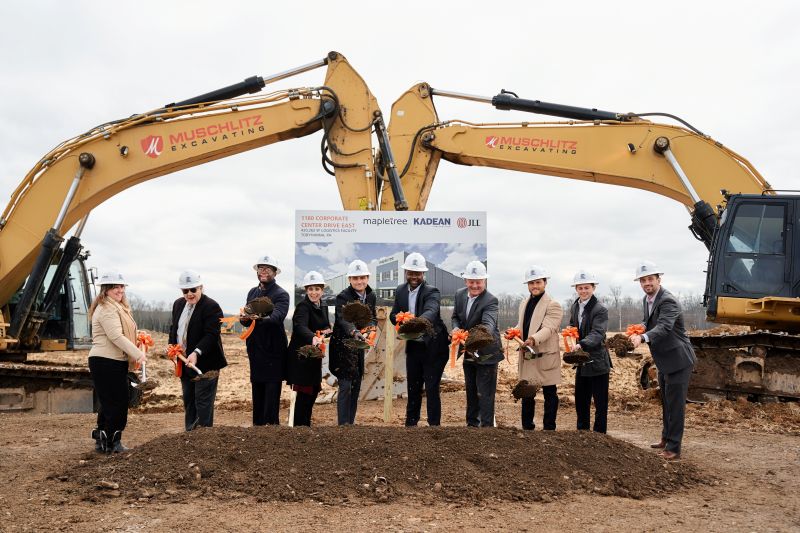Deputy Minister: Azerbaijan is among the few countries providing broadband internet across its entire territory – Apa.az

Report on the World Telecommunication Development Conference (WTDC-25) and its Alignment with Sustainable Development Goals
Addressing the Global Digital Divide in Line with SDG 9
A significant global challenge persists with approximately 2.6 billion people remaining without internet access. This digital divide represents a critical barrier to achieving the United Nations Sustainable Development Goals, particularly SDG 9 (Industry, Innovation, and Infrastructure), which advocates for universal and affordable access to information and communications technology. The upcoming World Telecommunication Development Conference (WTDC-25) is strategically positioned to address this issue by focusing on the expansion of accessible and high-quality connectivity for underserved populations.
Azerbaijan’s Contribution to Regional and Global Connectivity Goals
Azerbaijan has successfully achieved 100% broadband internet coverage across its territory, positioning the nation as a regional leader in digital infrastructure development. This accomplishment serves as a practical model for implementing policies aligned with SDG 9. By sharing its experience at the global level during WTDC-25, Azerbaijan contributes to international cooperation and knowledge sharing, a key component of SDG 17 (Partnerships for the Goals).
WTDC-25 Strategic Outcomes and Support for Vulnerable Nations
The conference is set to define a clear path for global digital development with several key objectives. These initiatives directly support SDG 10 (Reduced Inequalities) by prioritizing the needs of the most vulnerable states.
- Adoption of a global digital development roadmap for the 2026–2029 period.
- Identification of new regional initiatives and telecommunication priorities.
- A dedicated focus on enhancing the digital capabilities of:
- Least Developed Countries (LDCs)
- Landlocked Developing Countries (LLDCs)
- Small Island Developing States (SIDS)
Fostering Multi-Stakeholder Partnerships for Sustainable Development (SDG 17)
WTDC-25 will function as a unique platform for multi-stakeholder collaboration, embodying the principles of SDG 17. It will convene key actors to foster partnerships and accelerate progress on digital inclusion, which is a catalyst for other SDGs such as SDG 4 (Quality Education) and SDG 8 (Decent Work and Economic Growth). Participants will include:
- Government representatives
- Information and Communication Technology (ICT) industry leaders
- International organizations
This collaborative environment provides an invaluable opportunity for exchanging knowledge on new technologies and advanced practices, thereby strengthening Azerbaijan’s digital capabilities and reinforcing its position as a technological leader in the region.
1. Which SDGs are addressed or connected to the issues highlighted in the article?
The article highlights issues directly related to several Sustainable Development Goals (SDGs). The primary focus on internet connectivity, digital division, and international cooperation connects to the following goals:
-
SDG 9: Industry, Innovation, and Infrastructure
This goal is central to the article, which discusses the importance of internet access as a fundamental part of modern infrastructure. The mention of “broadband internet,” “connectivity,” and “telecommunication” directly relates to building resilient infrastructure and fostering innovation.
-
SDG 10: Reduced Inequalities
The article explicitly addresses the “global digital divide,” which is a significant aspect of inequality in the 21st century. The stated aim of the WTDC-25 to “increase accessible and high-quality connectivity opportunities” for the 2.6 billion people without internet access, with a special focus on “least developed countries, landlocked states, and small island developing states,” is a direct effort to reduce inequalities between and within countries.
-
SDG 17: Partnerships for the Goals
The World Telecommunication Development Conference (WTDC-25) itself is described as a “unique platform for knowledge and experience exchange” where “government representatives, ICT industry leaders, and international organizations will come together.” This multi-stakeholder collaboration to achieve a common goal (universal connectivity) is the essence of SDG 17. The adoption of a “global digital development roadmap” further exemplifies this partnership in action.
2. What specific targets under those SDGs can be identified based on the article’s content?
Based on the article’s discussion, the following specific SDG targets can be identified:
-
Target 9.c: Universal and affordable access to the Internet
This target aims to “significantly increase access to information and communications technology and strive to provide universal and affordable access to the Internet in least developed countries.” The article’s core theme is the effort to connect the “2.6 billion people in the world [who] still do not have access to the internet” and to reduce the “global digital divide,” which aligns perfectly with this target.
-
Target 10.2: Empower and promote the social, economic and political inclusion of all
While not explicitly numbered, the goal to reduce the “global digital divide” directly supports this target. By increasing internet access for populations in “least developed countries, landlocked states, and small island developing states,” the initiative promotes digital inclusion, which is a critical component of overall social and economic inclusion in the modern world.
-
Target 17.6: Enhance North-South, South-South and triangular regional and international cooperation on and access to science, technology and innovation
The WTDC-25 is presented as a mechanism to achieve this target. The article states it is a “unique platform for knowledge and experience exchange” and an “invaluable opportunity to enhance Azerbaijan’s digital capabilities and strengthen its position.” This exchange of experience, particularly Azerbaijan sharing its success in achieving 100% broadband coverage, is a form of South-South and regional cooperation on technology.
3. Are there any indicators mentioned or implied in the article that can be used to measure progress towards the identified targets?
Yes, the article mentions and implies several indicators that can be used to measure progress:
-
Indicator for Target 9.c: Proportion of the population with access to the internet
The article provides a clear baseline indicator by stating that “Approximately 2.6 billion people in the world still do not have access to the internet.” Progress towards Target 9.c would be measured by the reduction of this number over time. Furthermore, Azerbaijan’s achievement of providing “100% broadband internet across its entire territory” serves as a national-level indicator of universal access.
-
Indicator for Target 10.2: The “Global Digital Divide”
While not a formal UN indicator, the article uses the term “global digital divide” as a key metric of inequality. Progress would be measured by the narrowing of this gap, specifically by tracking the growth of internet connectivity and digital capabilities in “least developed countries, landlocked states, and small island developing states” compared to the global average.
-
Indicator for Target 17.6: Implementation of international cooperative frameworks
The article implies that the outcomes of the WTDC-25 serve as an indicator of partnership. The adoption of the “global digital development roadmap for 2026–2029” and the identification of “new regional initiatives” are concrete, measurable outcomes of this international cooperation, indicating progress towards Target 17.6.
4. Table of SDGs, Targets, and Indicators
| SDGs | Targets | Indicators |
|---|---|---|
| SDG 9: Industry, Innovation, and Infrastructure | Target 9.c: Significantly increase access to ICT and strive to provide universal and affordable access to the Internet in least developed countries. |
|
| SDG 10: Reduced Inequalities | Target 10.2: By 2030, empower and promote the social, economic and political inclusion of all. |
|
| SDG 17: Partnerships for the Goals | Target 17.6: Enhance regional and international cooperation on and access to science, technology and innovation. |
|
Source: en.apa.az
What is Your Reaction?
 Like
0
Like
0
 Dislike
0
Dislike
0
 Love
0
Love
0
 Funny
0
Funny
0
 Angry
0
Angry
0
 Sad
0
Sad
0
 Wow
0
Wow
0
















































:focal(1500,1000)/https://media.globalcitizen.org/a6/9a/a69a4720-d8a1-4715-b596-18738d03c05c/rotary_polio_hero_image.jpg?#)







/countries/sri-lanka/photo-credit---dmc-sri-lanka.tmb-1200v.jpg?sfvrsn=dc298bcc_1#)


















